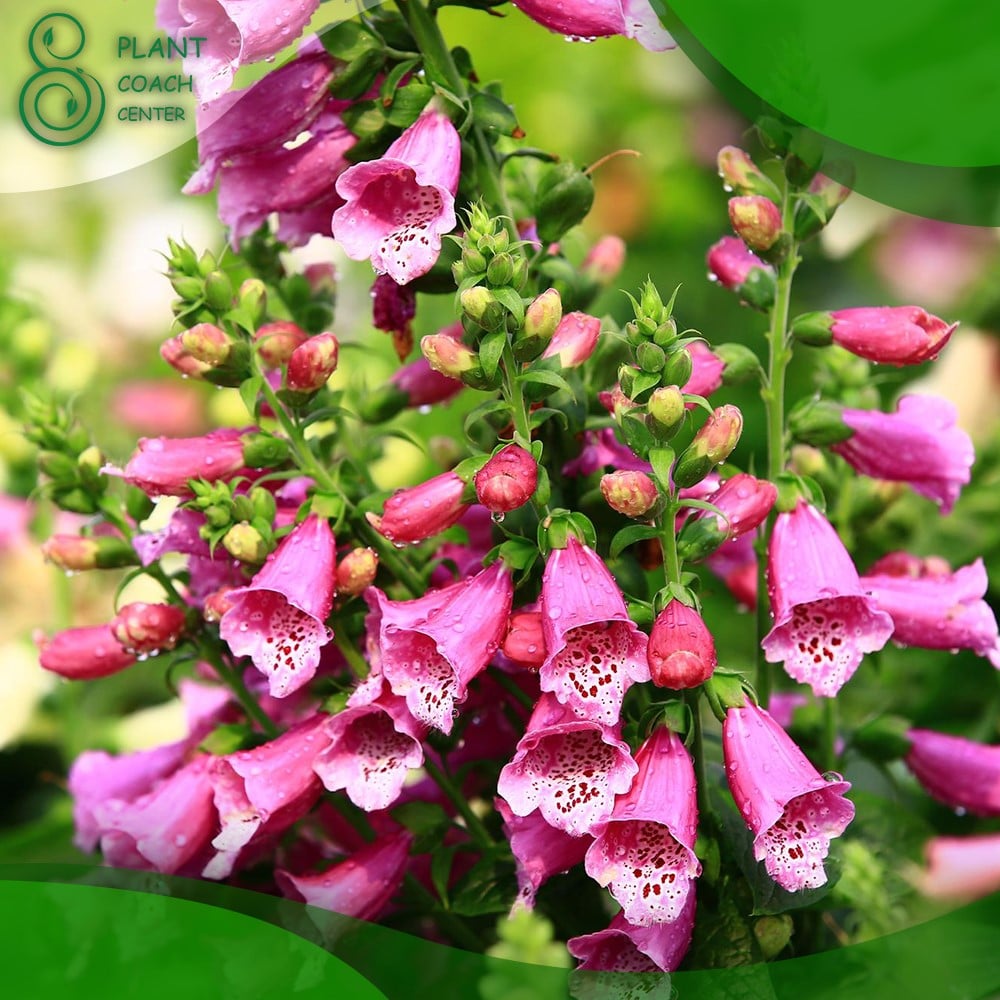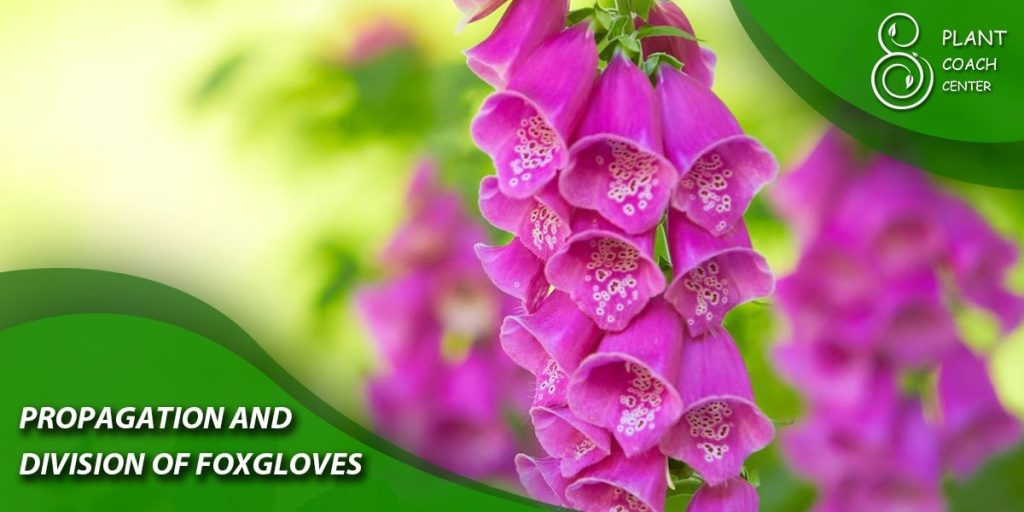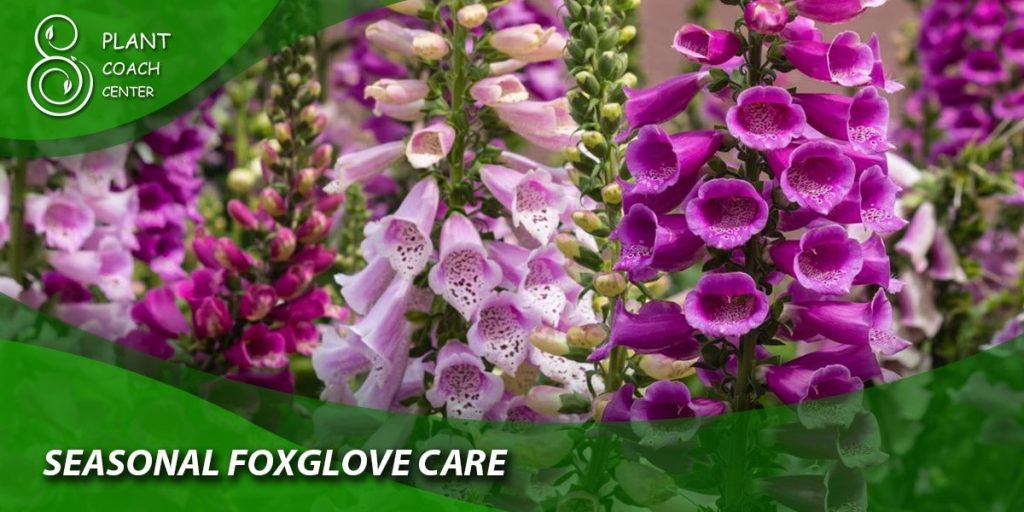When to Cut Back Foxgloves
Foxgloves (Digitalis spp.) are stunning flowering plants known for their tall spikes of tubular flowers, adding a touch of elegance to any garden. However, to ensure their continued health and beauty, proper pruning is essential. Pruning not only enhances their appearance but also encourages new growth, prevents disease, and prolongs their blooming period. In this comprehensive guide, we will explore the art of plant coaching and delve into common problems faced by foxgloves, with a primary focus on when and how to cut them back for optimal results.
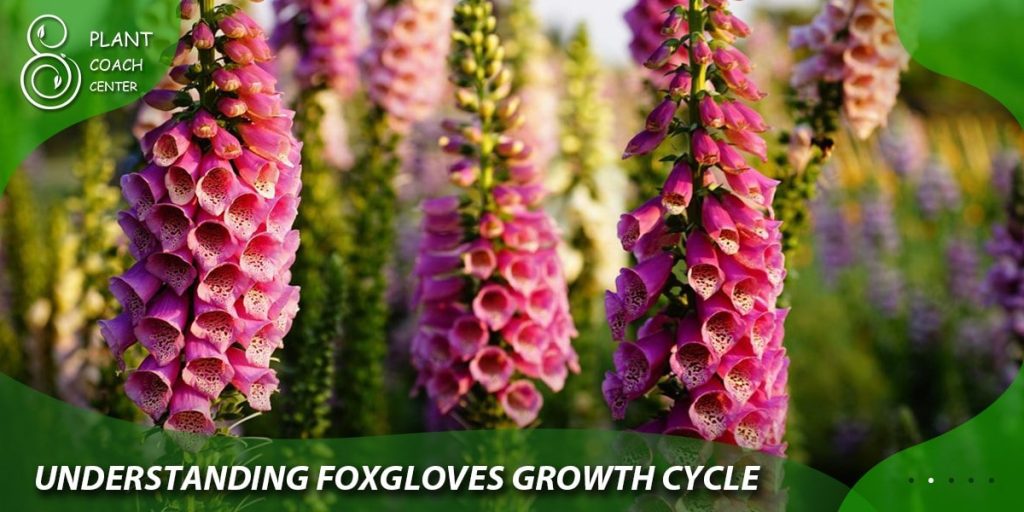
Understanding Foxgloves Growth Cycle
Foxgloves follow a distinctive growth cycle, with specific stages that impact their pruning requirements. To comprehend the ideal timing for cutting them back, let’s examine their growth process:
Stages of Foxgloves Growth
- Germination: Foxglove seeds germinate in the spring, starting their life cycle.
- Vegetative Growth: During the first year, foxgloves focus on vegetative growth, producing a rosette of leaves.
- Flowering Period: In the second year, the tall flower stalk emerges, displaying the iconic tubular flowers.
- Seed Production: After flowering, foxgloves produce seeds, completing their life cycle.
Factors Affecting Growth and Development
Several factors influence the growth and development of foxgloves:
- Light: Foxgloves prefer partial shade to thrive, but they can tolerate some sun exposure.
- Soil: Well-draining soil rich in organic matter is crucial for their growth.
- Water: Adequate and consistent watering is necessary, especially during dry periods.
Identifying Optimal Growth Conditions
To ensure your foxgloves flourish, consider the following tips:
- Site Selection: Choose a location with dappled sunlight and protection from strong winds.
- Soil Preparation: Amend the soil with compost or well-rotted manure before planting.
- Watering: Provide consistent moisture, allowing the soil to dry slightly between waterings.
The Art of Plant Coaching
Plant coaching is a holistic approach that involves nurturing plants to their fullest potential. For foxgloves, plant coaching can significantly improve their overall health and blooming capacity.
Definition and Principles of Plant Coaching
Plant coaching is about creating a personalized care plan tailored to each plant’s unique needs. The core principles include:
- Observation: Regularly observe your foxgloves to identify signs of stress, disease, or nutrient deficiencies.
- Proactive Care: Anticipate the plant’s needs and address issues before they escalate.
Benefits of Plant Coaching for Foxgloves
When you apply plant coaching to your foxgloves, you can expect:
- Enhanced Growth: Proper care and maintenance lead to healthier and more vigorous plants.
- Increased Flower Production: By understanding your foxgloves’ growth cycle, you can optimize pruning to encourage more blooms.
- Pest and Disease Prevention: Regular observation helps catch issues early, preventing severe infestations or diseases.
Selecting the Right Coach for Your Foxgloves
Choose a plant coach or gardening mentor who:
- Has Experience with Foxgloves: Look for someone knowledgeable about foxgloves and their specific care needs.
- Shares Your Gardening Philosophy: Ensure your coach’s approach aligns with your gardening style and values.
- Encourages Learning: A good coach empowers you to learn and grow as a gardener.
Common Problems in Foxgloves
Despite their beauty, foxgloves are susceptible to various issues that can hinder their growth and flowering potential. Understanding these common problems is crucial for effective plant coaching.
Pests and Diseases
Common Pests Affecting Foxgloves
- Aphids: These tiny, sap-sucking insects can quickly multiply and weaken the plant.
- Slugs and Snails: They feed on leaves, leaving behind characteristic slime trails.
- Spider Mites: These minuscule pests cause discoloration and webbing on the plant.
Recognizing and Treating Diseases in Foxgloves
- Powdery Mildew: A fungal disease that appears as a white, powdery substance on leaves and stems. Improve airflow and consider fungicidal treatments.
- Rust: Identified by orange, rust-like spots on leaves. Remove affected foliage and avoid overhead watering.
Nutritional Deficiencies and Imbalances
Identifying Nutrient Deficiencies
- Nitrogen Deficiency: Yellowing of older leaves and stunted growth are signs of insufficient nitrogen.
- Phosphorus Deficiency: Limited flower production and purple-tinged leaves indicate phosphorus deficiency.
Soil Amendments and Fertilization Techniques
To address nutrient deficiencies:
- Soil Testing: Perform soil tests to identify specific nutrient imbalances.
- Organic Matter: Incorporate compost or well-rotted manure to improve soil fertility.
- Balanced Fertilizers: Apply a balanced fertilizer or a specialized formula to correct deficiencies.
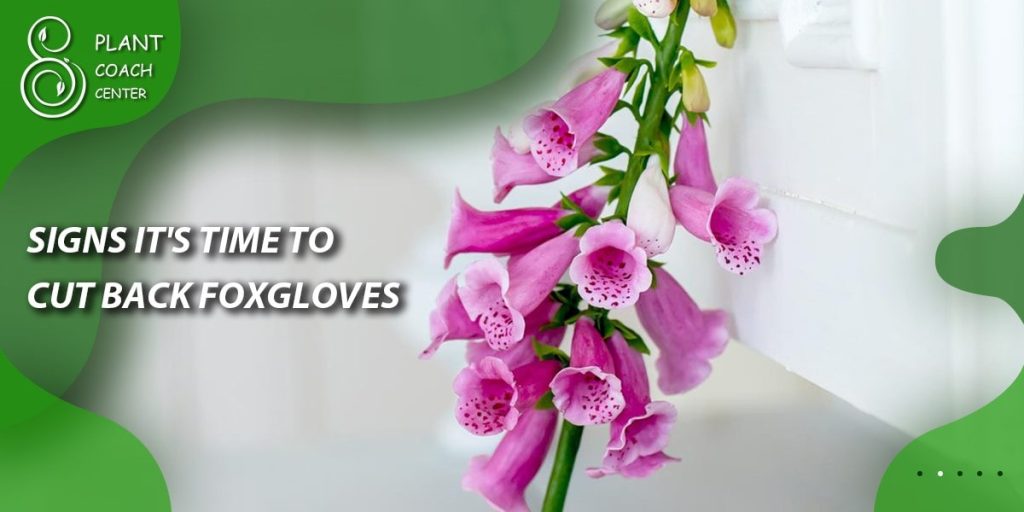
Signs It’s Time to Cut Back Foxgloves
Knowing when to prune your foxgloves is crucial for their overall health and appearance. Several signs indicate it’s time to cut them back:
Visual Cues for Pruning
- Wilting and Discoloration: If you notice wilting, yellowing, or browning leaves, it may be time to trim the plant.
- Overcrowding and Competition: When the foxgloves become overcrowded, they might not receive enough sunlight and air circulation.
Timing Based on Growth Stage
- Pruning During Flowering Period: Deadheading spent flowers during blooming encourages continuous flowering.
- Pruning After Flowering: Once the flowers have faded, cutting back the entire stalk can prevent self-seeding and redirect energy for root development.
Proper Techniques for Cutting Back Foxgloves
To ensure successful pruning, follow these steps:
Tools and Equipment Needed
- Pruning Shears: Use sharp, clean pruning shears to avoid damaging the plant.
- Gloves: Wear gardening gloves to protect your hands while pruning.
Step-by-Step Guide to Pruning Foxgloves
- Inspect the Plant: Before pruning, examine the plant for signs of pests, diseases, or damaged foliage.
- Identify the Pruning Point: Look for a healthy set of leaves or a lateral shoot below the spent flowers.
- Cutting the Stalk: Position the pruning shears just above the identified point and make a clean, angled cut.
Potential Risks and Precautions
- Toxicity: Foxgloves are toxic if ingested, so handle them with care and keep them away from children and pets.
- Allergenic Properties: Some individuals may be allergic to foxgloves’ sap, so wear gloves while pruning.
Plant Coaching for Healthy Foxgloves
Proper plant coaching involves ongoing care and maintenance practices to keep your foxgloves vibrant and thriving.
Optimal Care and Maintenance Practices
- Watering and Irrigation: Keep the soil consistently moist, avoiding waterlogged conditions.
- Mulching and Weed Control: Apply a layer of organic mulch to retain moisture and suppress weed growth.
Maximizing Blooming Potential
- Fertilization: Use a balanced fertilizer to encourage healthy growth and abundant blooms.
- Deadheading: Regularly remove spent flowers to promote continuous flowering.
Promoting Biodiversity in the Garden
- Companion Planting: Introduce plants that attract beneficial insects, which can help control pests.
- Pollinator-Friendly Garden: Attract bees and butterflies to aid in pollination and increase fruit set.
Propagation and Division of Foxgloves
Expanding your foxglove collection or rejuvenating older plants can be achieved through propagation and division.
Understanding Plant Propagation
- Seed Propagation: Collect seeds from mature foxgloves and sow them in a well-prepared seedbed.
- Division: Divide mature plants in early spring or fall when they become overcrowded.
How to Divide Foxgloves Properly
- Prepare the Plant: Water the plant thoroughly a day before dividing to reduce stress.
- Digging the Plant: Carefully dig around the plant, lifting it from the ground with minimal root disturbance.
- Separating the Clumps: Gently tease apart the root clumps into individual plants, ensuring each section has adequate roots and foliage.
- Replanting: Transplant the divisions to their new location, ensuring they receive proper care during the establishment phase.
Planting and Caring for New Divisions
- Watering: Keep the newly planted divisions consistently moist until they establish themselves.
- Shade Protection: Provide some shade to reduce stress on newly transplanted divisions.
Advanced Tips for Experienced Gardeners
For seasoned gardeners looking to experiment and take their foxgloves to new heights, consider the following advanced techniques:
Hybridization and Cultivar Selection
- Crossbreeding: Delve into the world of hybridization to create new and unique foxglove varieties.
- Cultivar Selection: Explore different cultivars to discover the perfect fit for your garden design.
Crossbreeding Techniques and Outcomes
- Pollen Transfer: Learn how to transfer pollen between parent plants to initiate crossbreeding.
- Observing Offspring: Observe the traits and characteristics of hybrid offspring for exciting results.
Case Studies and Success Stories
Real-life examples of successful plant coaching and pruning can serve as inspiration for aspiring gardeners. Here are a few case studies:
- Case Study: Rejuvenating Neglected Foxgloves: A gardener’s journey in restoring a neglected foxglove patch through strategic pruning and fertilization.
- Success Story: Continuous Blooms with Deadheading: How regular deadheading of foxgloves resulted in an extended blooming period and a stunning garden display.
Extending the Blooming Season of Foxgloves
If you desire an extended blooming period for your foxgloves, consider these techniques:
- Succession Planting: Plant foxgloves at different intervals to stagger their bloom times.
- Deadheading Methods: Experiment with various deadheading techniques to promote new flower growth.
- Fertilization Adjustments: Modify your fertilization schedule to encourage prolonged flowering.
Foxgloves and Wildlife in the Garden
Discover how foxgloves can attract and support wildlife in your garden:
- Attracting Pollinators: Observe bees, butterflies, and hummingbirds as they visit your foxgloves for nectar.
- Beneficial Insects: Explore the role of beneficial insects in controlling pests and maintaining garden balance.
- Ecological Importance: Understand the ecological significance of foxgloves in the broader ecosystem.
Foxgloves: Folklore and Medicinal Uses
Uncover the fascinating history of foxgloves in human culture:
- Historical Significance: Explore the folklore and symbolism associated with foxgloves throughout history.
- Medicinal Properties: Learn about the medicinal compounds derived from foxgloves, such as digitalis, used to treat heart conditions.
- Cautionary Note: Emphasize the importance of proper knowledge and professional guidance when dealing with potentially toxic plants.
Troubleshooting Common Issues in Foxgloves
Equip gardeners with practical solutions for common problems:
- Dealing with Pests: Provide natural pest control methods and eco-friendly solutions for dealing with aphids, slugs, and other pests.
- Addressing Diseases: Offer comprehensive advice on diagnosing and treating common foxglove diseases effectively.
Seasonal Foxglove Care
Explore the specific care needed for foxgloves during different seasons:
- Spring Care: Tips on nurturing emerging foxglove rosettes and preparing for the upcoming blooming season.
- Summer Care: Managing foxgloves during their peak blooming period, ensuring proper watering and protection from extreme weather.
- Fall and Winter Care: Preparing foxgloves for dormancy, cutting back spent flowers, and protecting them from cold temperatures.
Creative Garden Designs with Foxgloves
Inspire readers with innovative ways to incorporate foxgloves into garden designs:
- Cottage Garden Style: Embrace the classic charm of foxgloves in a cottage garden setting.
- Wildlife-Friendly Gardens: Design spaces that attract pollinators and wildlife with a variety of plant species, including foxgloves.
- Vertical Gardening: Utilize foxgloves’ tall flower spikes to create stunning vertical accents in your garden.
Foxgloves in Containers and Indoor Spaces
Showcase the versatility of foxgloves in container gardening:
- Container Selection: Choose suitable containers for growing foxgloves indoors or on balconies.
- Indoor Care: Provide tips for successfully cultivating foxgloves as houseplants.
Conclusion
Foxgloves are captivating plants that can grace any garden with their elegance and charm. By embracing the art of plant coaching and understanding common problems faced by foxgloves, gardeners can cultivate thriving and vibrant displays. Remember, knowing when and how to cut back foxgloves is essential for promoting healthy growth and encouraging continuous blooms. Through careful observation, proper pruning techniques, and optimal care, you can create a breathtaking foxglove garden that will be the envy of all who behold it.
Happy gardening, and may your foxgloves flourish abundantly in your loving care!
When is the best time to cut back foxgloves?
After flowering or during the blooming period for continuous blooms.
Are foxgloves poisonous to pets and humans?
Yes, all parts of foxgloves are toxic if ingested.
Can I grow foxgloves indoors in containers?
Yes, but ensure they receive adequate sunlight and well-drained soil.


